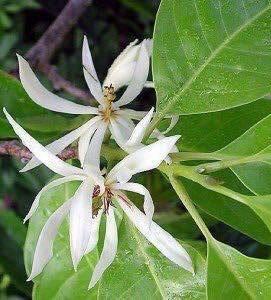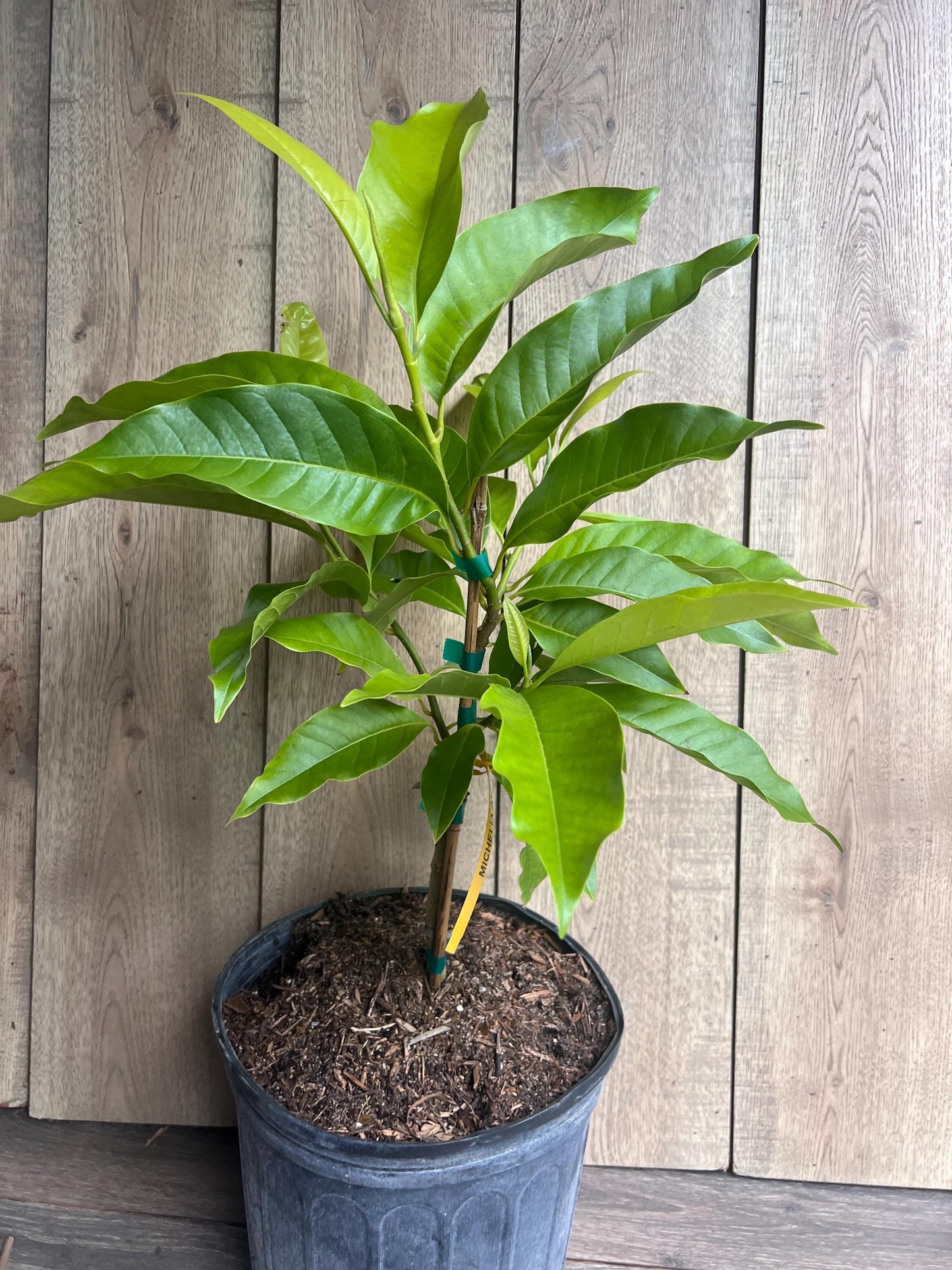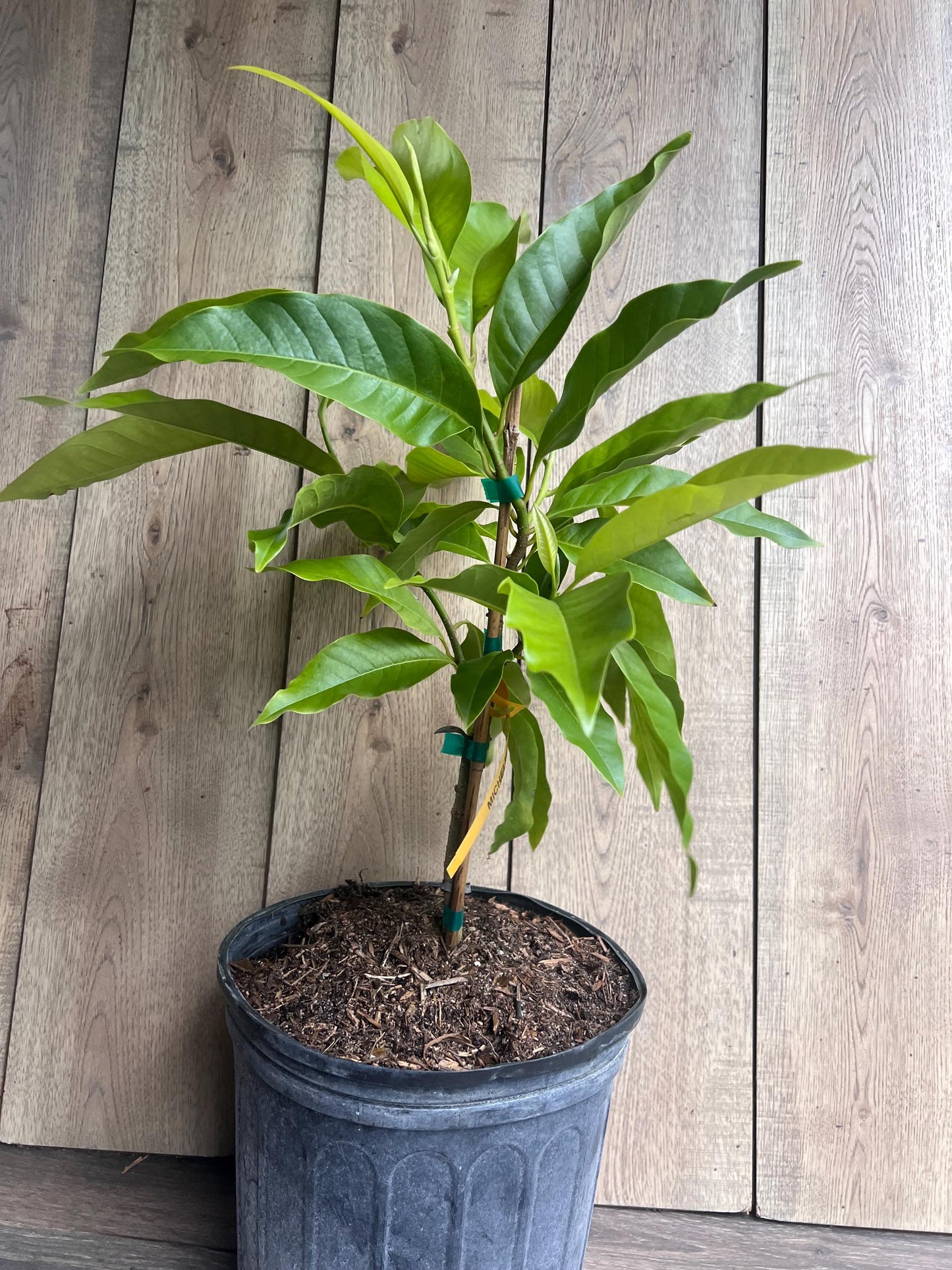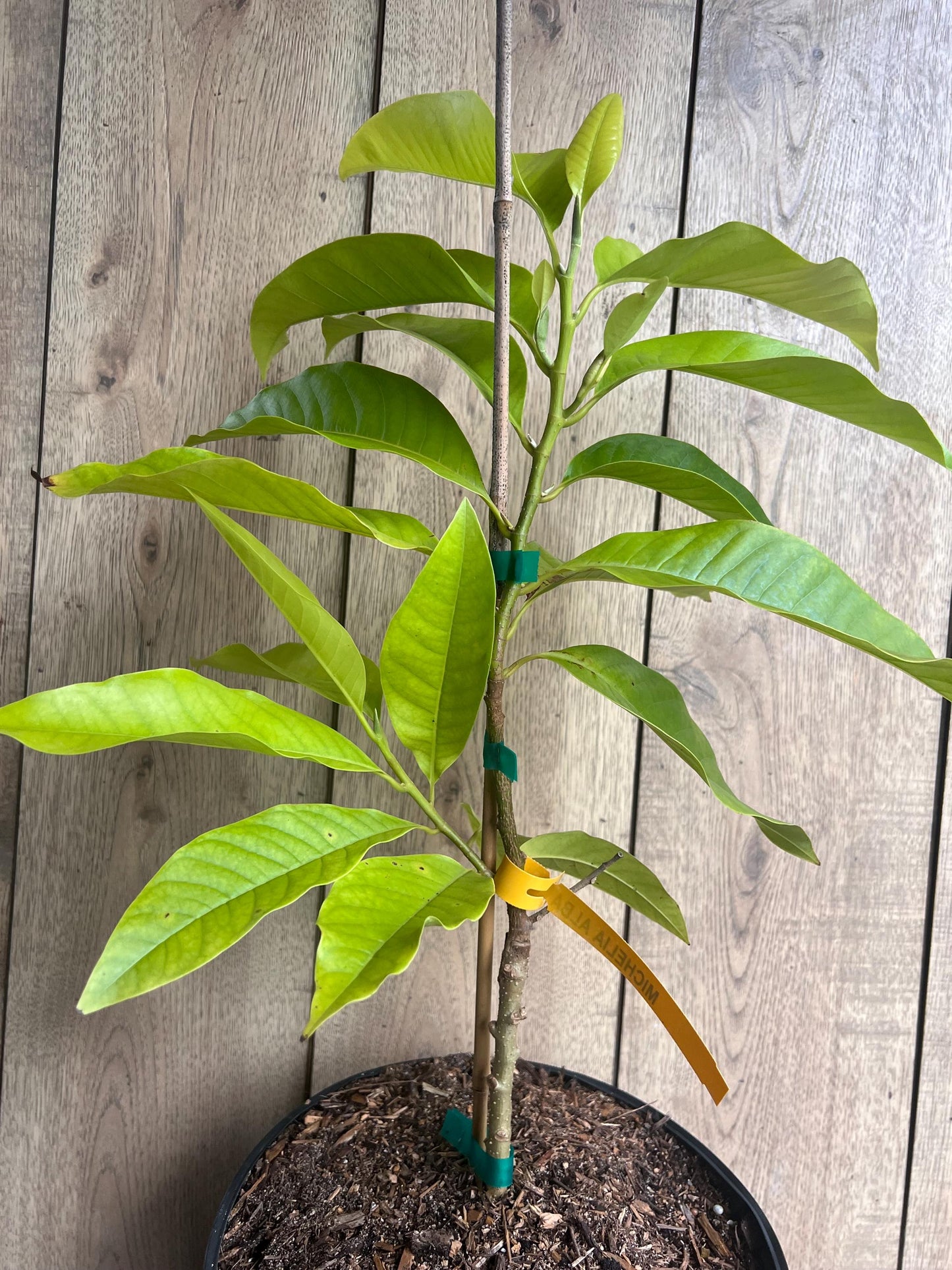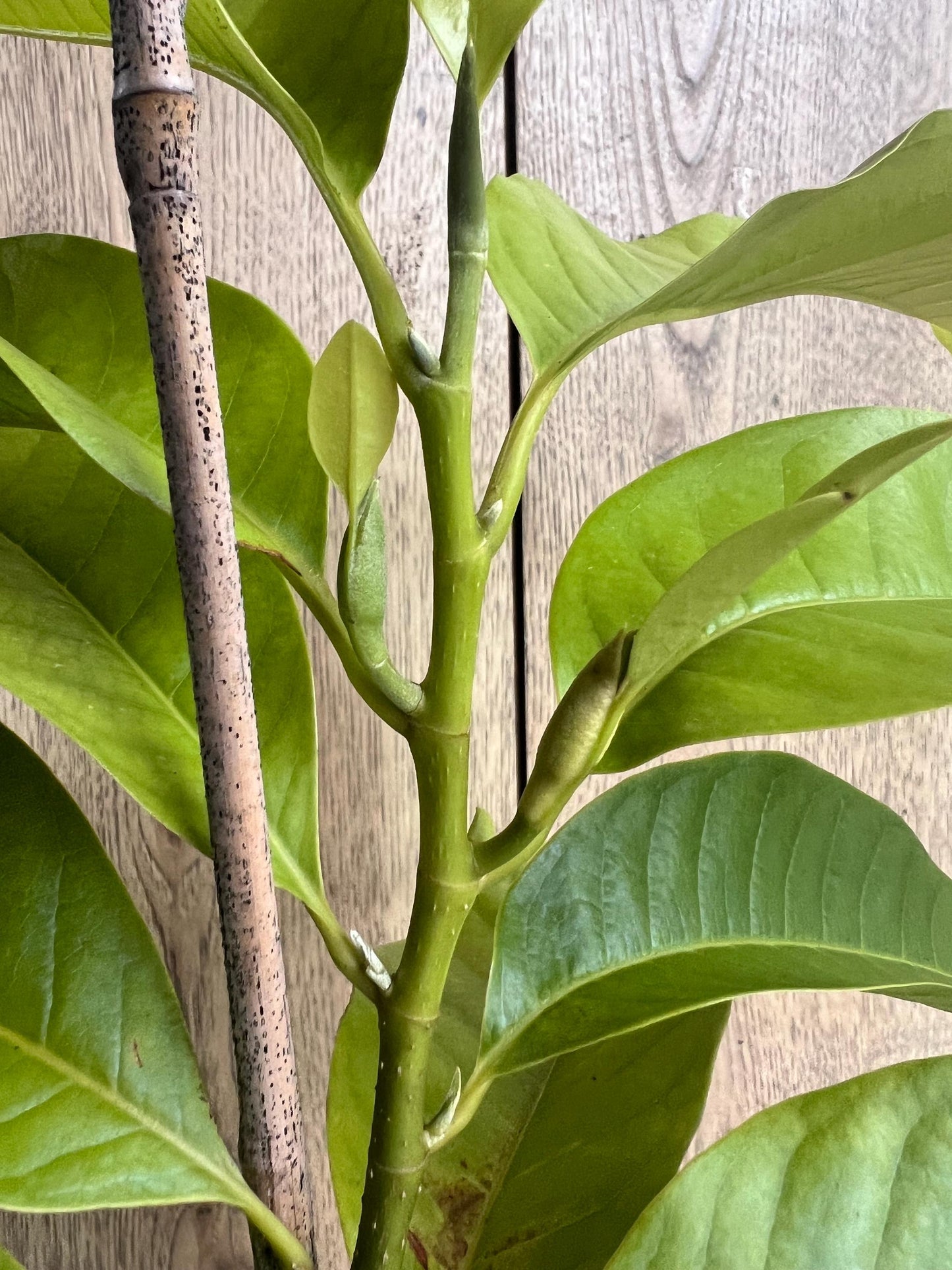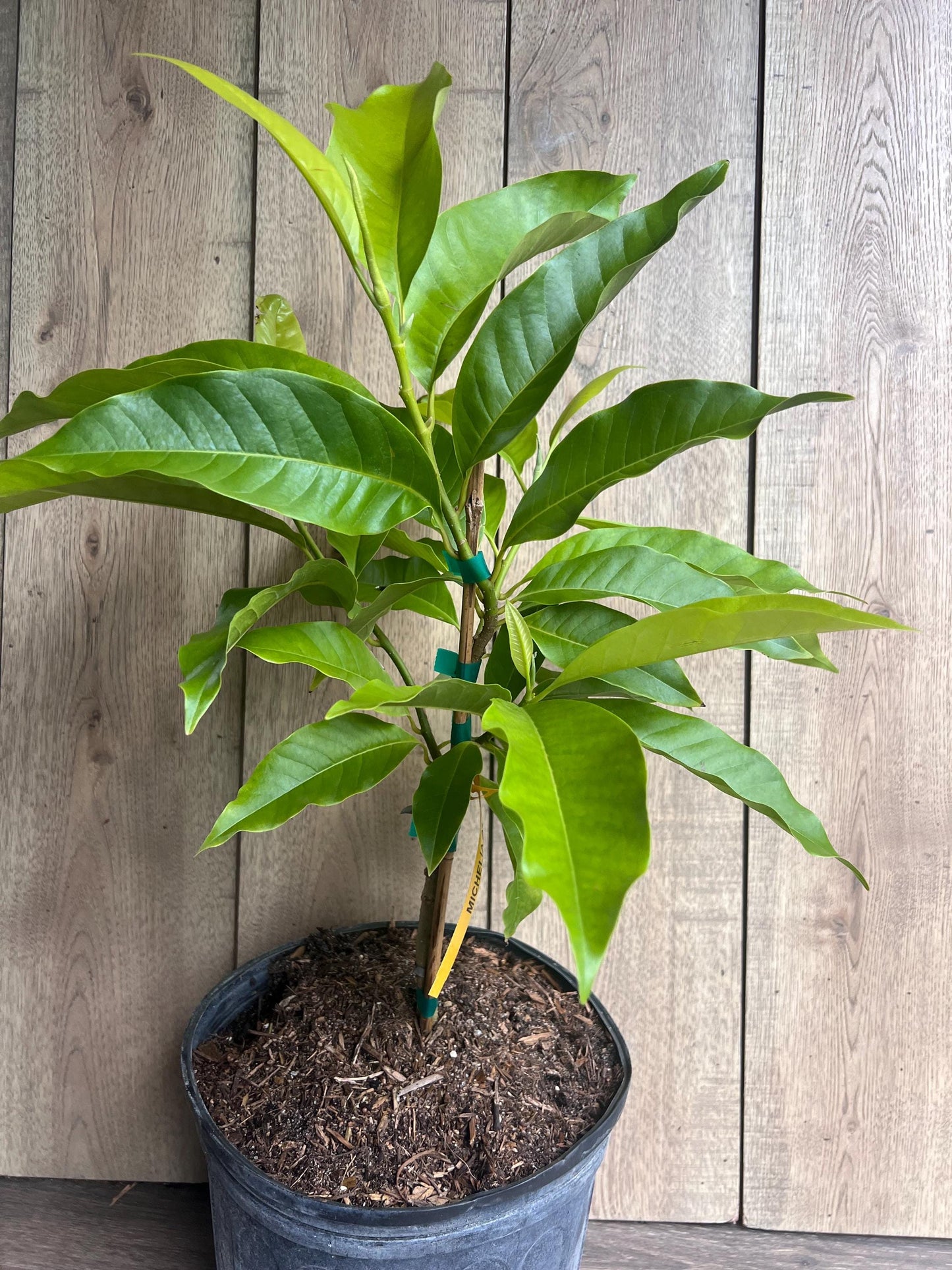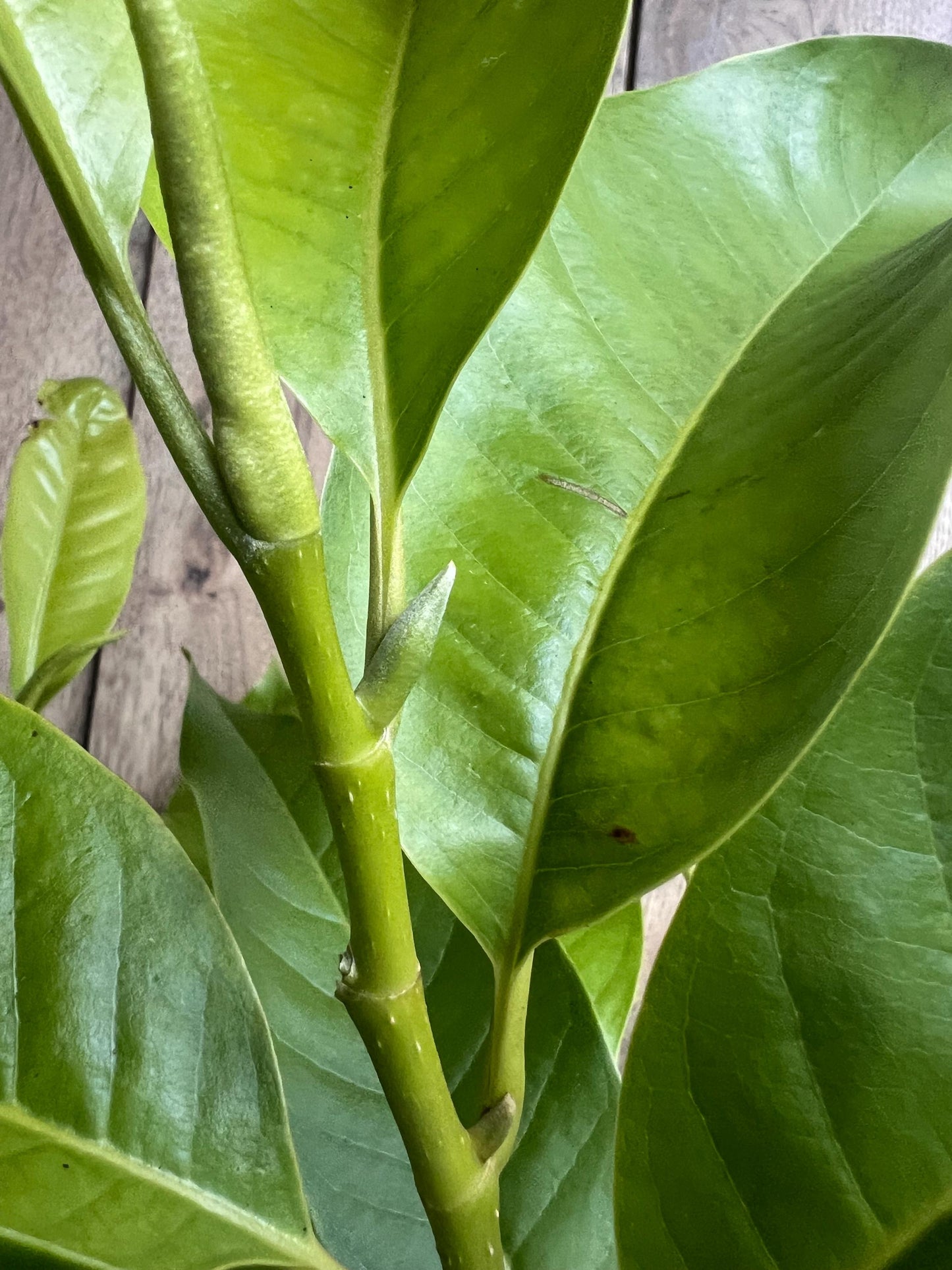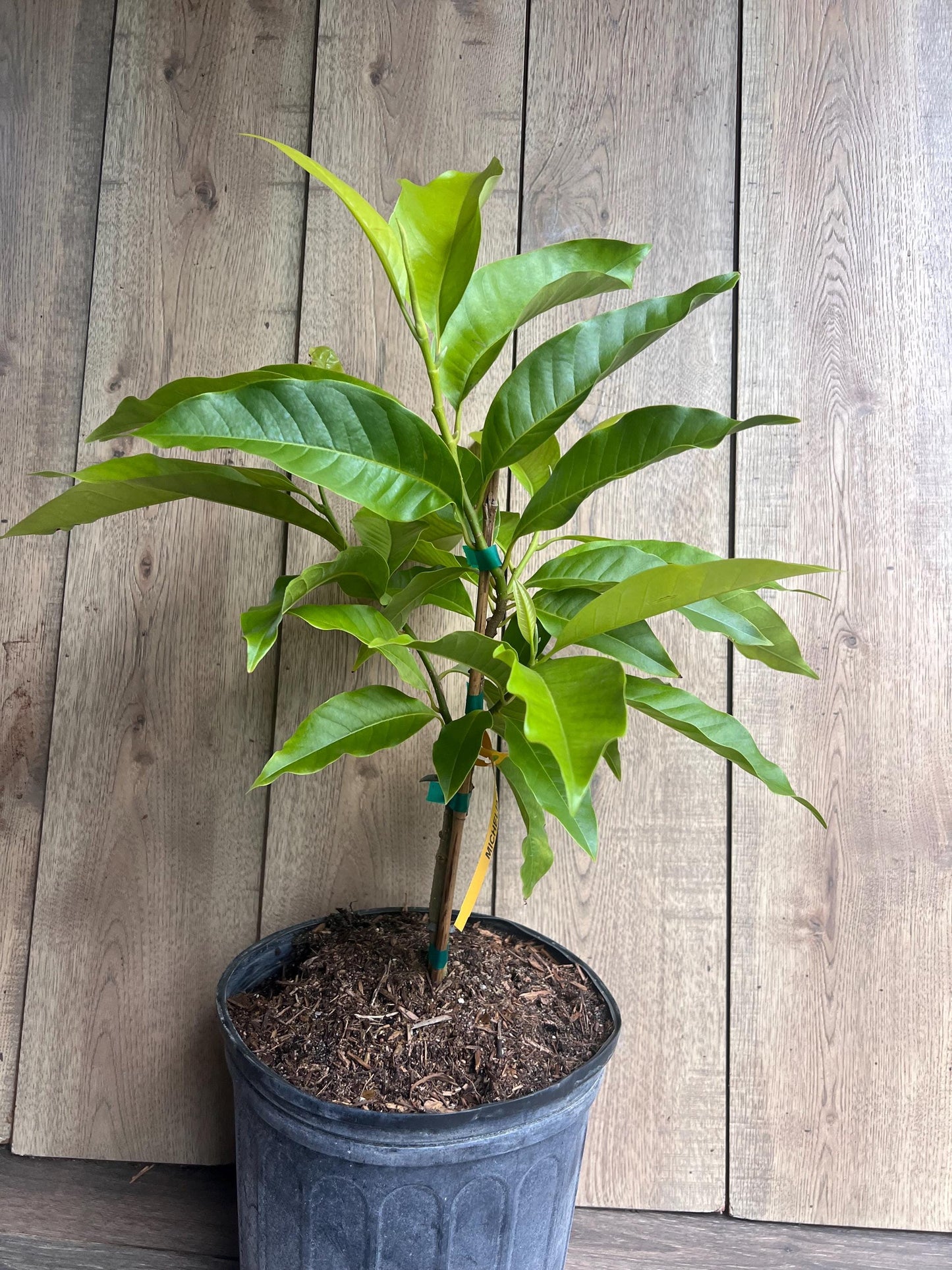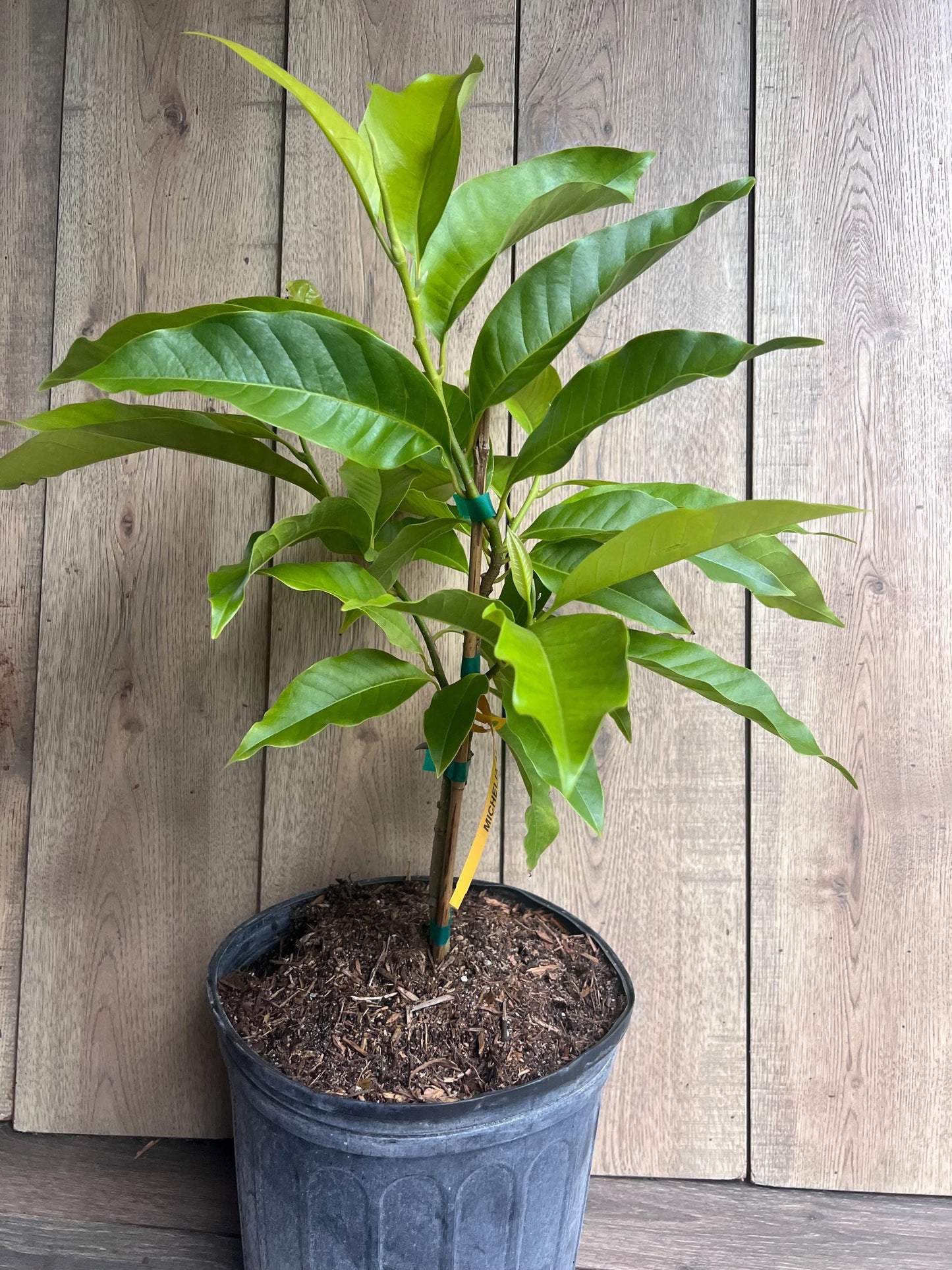White champaca, Grafted in 3 gallon pot, Ngọc Lan Trắng, Michelia alba
White champaca, Grafted in 3 gallon pot, Ngọc Lan Trắng, Michelia alba
Couldn't load pickup availability
Note: You will receive White Champaca in 10" Pot Similar to the pictures
White Champaca (Magnolia alba), also known as the White Jade Orchid Tree, is a fragrant, tropical tree native to Southeast Asia, celebrated for its stunning creamy-white flowers and sweet fragrance. These large, star-shaped blooms release an intoxicating scent, often described as a blend of jasmine, magnolia, and citrus, which intensifies in the evening. The tree's glossy, dark green leaves provide an attractive backdrop for the blooms, which appear year-round in warm climates, with peak flowering in late spring and summer. White Champaca can grow to 30–40 feet (9–12 meters), making it ideal for tropical or subtropical gardens. It thrives in full sun to partial shade and well-draining, slightly acidic soil, requiring minimal maintenance but consistent care to thrive.
Care Guide for White Champaca (Magnolia alba)
-
Light
- White Champaca requires full sun for optimal growth and flowering, needing at least 6-8 hours of direct sunlight daily. In regions with intense afternoon sun, partial shade can be beneficial, but the tree blooms best with consistent bright light.
-
Soil
- The tree prefers well-draining, slightly acidic soil (pH 5.5-6.5). It grows best in rich, loamy soil that retains moisture but does not become waterlogged. If your soil is heavy or clay-based, amend it with organic matter or sand to improve drainage.
-
Watering
- White Champaca requires regular watering, especially in warmer months. Water deeply, allowing the soil to dry out slightly between waterings. Avoid waterlogged soil, which can lead to root rot. Once established, it is moderately drought-tolerant but performs best with consistent moisture, particularly during dry periods.
-
Temperature
- This tropical tree thrives in warm temperatures, ideally between 65°F and 85°F (18°C to 29°C). It is not frost-tolerant and should be protected from cold, ideally growing in USDA hardiness zones 10-11. In cooler climates, it can be grown in a large container and brought indoors during winter or placed in a sheltered location.
-
Humidity
- White Champaca thrives in high humidity typical of tropical and subtropical environments. If growing indoors in a dry climate, increase humidity by placing the tree near a humidifier, misting it occasionally, or using a humidity tray. Outdoor trees in tropical climates will naturally receive the humidity they need.
-
Fertilization
- Fertilize in early spring and mid-summer with a balanced, slow-release fertilizer designed for flowering trees or shrubs. Avoid high-nitrogen fertilizers, as they can promote excessive leafy growth at the expense of flowers. Organic compost or well-aged manure can also be used to enrich the soil and provide nutrients.
-
Pruning
- Light pruning is recommended to maintain the tree's shape and remove dead or damaged branches. Prune after flowering to avoid cutting off future buds. Avoid heavy pruning, as it can impact the tree's natural form and its ability to flower.
-
Pests and Diseases
- White Champaca is generally resistant to pests, but it can occasionally suffer from scale insects, aphids, or spider mites. Regularly inspect for pests and treat with insecticidal soap or neem oil if necessary. Ensure good air circulation around the tree to prevent fungal diseases, which can occur in overly humid or wet conditions.
-
Repotting
- If growing in a pot, repot every 2-3 years to refresh the soil and provide space for the roots. Choose a slightly larger pot with good drainage to prevent water accumulation. For trees planted in the ground, annual mulching can help retain moisture and improve soil quality without disturbing the roots.
Share
